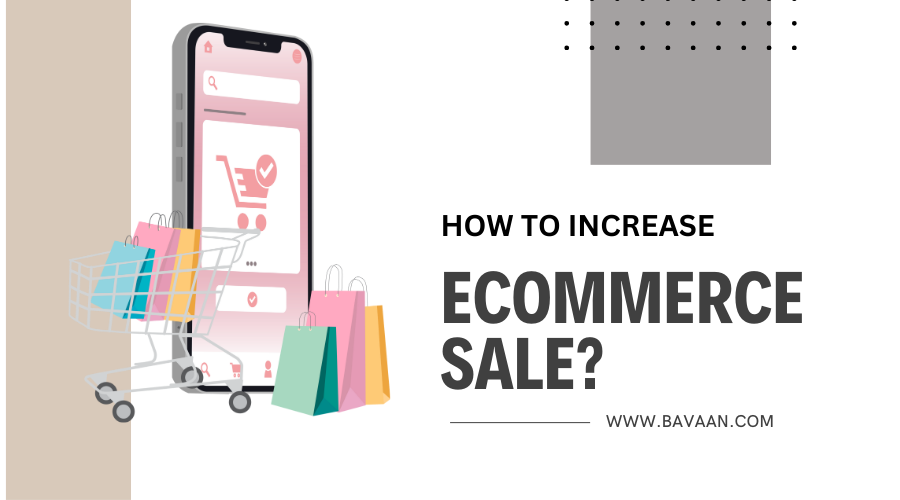Running an e-commerce store can be a thrilling rollercoaster. One day you’re celebrating record-breaking sales, the next you’re staring at a dashboard that seems to be taunting you with its red numbers. If you’re finding yourself in the latter situation, don’t panic! You’re not alone. Countless e-commerce businesses need help with stagnant or declining sales at some point. But the good news is, there’s always a way to turn things around.
In this blog, we’ll ditch the empty platitudes and get real about practical strategies you can implement to reignite your e-commerce sales engine. We’ll delve into proven tactics for attracting new customers, converting browsers into buyers, and boosting your average order value. So, buckle up, grab your metaphorical wrench, and get ready to fine-tune your e-commerce machine for maximum profitability!
I. What Are Key Factors that Influence E-commerce Sales?
At the end of the session, when you analyze the data, you may face 2 options: the first one is the revenue increase to the previous sales events, and the second option is a contract, and you have a question yourself, why the same marketing campaign, the same targeted customers but the sales or the revenue is not better than before.
Stay calm, after analysis from many sources, we have listed some common factors that can influence your e-commerce sales. Now let’s dive in!
1.1. Competitive Pricing
Balancing profitability and competitiveness in e-commerce pricing is the key to success. Firstly, you need to understand the value of your products, then research competitor prices and product offerings.
You also need to choose a pricing strategy like cost-plus, competitor-based, or value-based, profit goals, brand images, and other factors related to your promise. Finally, you’ll experiment, track results, and adjust your strategy.

Besides, we have one notification for you: it’s not just about being the cheapest; it’s about finding a price that attracts customers while ensuring your business thrives.
1.2. Product Quality
While competitive pricing grabs attention, high-quality products are the foundation of e-commerce success. They build trust, foster positive reviews, and ultimately drive repeat purchases.
Firstly, you need to build trustworthiness from customers. Shoppers can’t physically examine products online, so accurate descriptions and clear images become crucial. Detailed specifications, material lists, and high-resolution photos from various angles make everything clearer than ever, reducing perceived risk and boosting trust.
Moreover, when you clarify the product, you can also reduce returns and refunds. Inferior products lead to returns and refunds, damaging profitability and customer satisfaction. High quality translates to fewer headaches for you and your customers, fostering a win-win situation.
Additionally, you can have positive reviews by word-of-mouth. Some satisfied customers become vocal advocates. Excellent quality generates positive reviews and organic word-of-mouth marketing can attract new customers and solidify your brand reputation.
Finally, you can also increase customer lifetime value. Loyal customers who trust your quality will likely make repeat purchases and explore other offerings. This translates to higher customer lifetime value, boosting your bottom line.
Remember: Quality is not just about materials or construction. It encompasses functionality, durability, and alignment with customer expectations. Invest in thorough quality control, gather customer feedback, and continuously improve your offerings to solidify your position as a trusted provider of high-quality products.
1.3. Shipping Time and Cost
Besides the competitive pricing and product quality, shipping time and cost are also two critical factors. The shop has fast and affordable shipping options that can reach out to more customers than ever. It can be the deciding factor for customers choosing your store over another, so it’s important to get it right.
1.4. Online Reviews
If you wonder how to increase e-commerce sales, one of the best factors is online reviews. According to a survey by Trustpilot, 89% of online buyers still read reviews before deciding to buy this product or not. When the customers decide to buy one product, they will have a hobby of scrolling down to read the reviews from previous customers. If this product has high purchases and also has good reviews, the online store owner can sell products easier than ever.

1.5. E-commerce Store Traffic
Traffic refers to the number of visits to your online store. In general, if your site has a large traffic that means you can gain more potential customers and increase website sales.
II. How To Increase E-commerce Sales?
Each of the business owners has a different strategy to increase store traffic, increase e-commerce sales, but below are some outstanding tips to boost sales and maximize customer retention and loyalty.
2.1. Focus on a sales funnel
You can use e-commerce site metrics to recognize the weaknesses of your sales funnel. For instance: when your online store lacks website visitors despite decent conversion rates, you need to focus on investing in top-of-funnel strategies like social media, paid ads, and SEO optimization to attract more potential rates. In the contract, if your site has ample website traffic but struggles with actual purchases, you also need to optimize the online shopping experience for a smoother conversion journey.
2.2. Running a paid ads campaign
Investing the ads can help your site increase traffic resulting in a boost the potential customers. Running ads have 2 types: traditional formats and digital advertising. The traditional formats include printed documents, billboards, direct mail, and the latter: digital advertising like social media, search engine ads
It can be said that digital ads can be more effective for e-commerce businesses than traditional formats. It can reach a large audience and target potential customers more easily than before because it is based on some factors like interests, and browning behaviors.
2.3. Use social media marketing
If your target of your site is to gain more website traffic, you should try to invest time in social media. It’s a powerful tool to raise brand awareness, educate potential customers about your products, attract new followers, and drive them right to your online store. Furthermore, social media also helps build customer loyalty and encourage repeat purchases by providing long-term value.
To reach the most out of your social media efforts, you need to know what platforms your target audience hangs out with. After that, you also need to focus on these platforms by producing good videos and posts to increase audience engagement, or tracking your progress to see what’s working, etc.
2.4. Sell on Bing
As you know before, Google and Yahoo might be the search engine giants, but here’s the secret: over half of US internet users (that’s millions of people) use Bing.
Moreover, advertising on Bing often means lower costs per click and higher conversion rates for many types of products.
If your target audience aligns with Bing’s demographics, you can potentially reach a smaller pond but bigger, easier-to-catch fish. It’s about smart targeting and a higher return on investment (ROI), not just pure search volume.
2.5. Increase user’s experience
A beautiful and functional website doesn’t just look good, it also attracts more customers. A welcoming storefront that’s easy to navigate, showcasing your products in stunning visuals. That’s the power of a well-designed site. It draws visitors in, guides them effortlessly, and ultimately converts them into loyal customers.
2.6. Start a loyalty programs
A loyalty program is a technique for consumer engagement wherein a company honors and compensates its most devoted patrons. Additionally, companies utilize them to reward certain actions, like buying something or bringing in a new client. By encouraging recurring business, raising average order values, and boosting customer retention rates, loyalty programs may assist companies in expanding e-commerce sales.
2.7. Reduce cart abandonment
Seventy percent of carts are abandoned on average. That indicates that throughout the shopping or checkout process, seven clients abandon your online business for every three that finish a transaction. You may lower the percentage of cart abandonment by using retargeting advertising and reminder emails. It might also be beneficial to follow checkout best practices, which include providing assistance and taking many payment options.
Final Thoughts
In conclusion, the journey to increased e-commerce sales is paved with strategic optimization, targeted marketing, and unwavering customer focus. You need to notice that: the key is to create a seamless and enticing shopping experience that guides visitors from discovery to purchase. Implement these actionable strategies, track your progress, and adapt your approach to continuously improve.
With dedication and data-driven decisions, you can transform your online store into a thriving hub of transactions and loyal customers.
Start growing your e-commerce success today!
Read more:
- List Of ECommerce Risks Maybe You Don’t Know | Ultimate Update
- The Rise of B2B Ecommerce Marketplace
- How To Run An e-Commerce Business As A Non-Technical Founder



